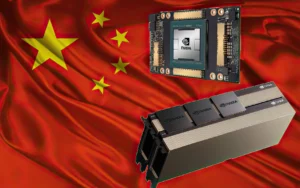Introduction:
The ambitious $10.7 billion investment initiative by Italy marks a pivotal moment in the country’s industrial strategy, signaling its intent to become a dominant to Lead Europe in One of the Largest Microelectronics Production.
Italy is preparing to become one of the largest microelectronics producers in Europe. I believe that in the coming weeks we will be in a position to make other equally significant announcements.
~Industry Minister Adolfo Urso
This follows a €3.2bn deal with Silicon Box to build a chiplet packaging plant in the north of Italy.
The Italy’s $10.7 Billion investested sector strategy is multifaceted, encompassing various initiatives aimed at bolstering the country’s microelectronics sector.
A substantial portion of the funds will be used to build state-of-the-art semiconductor manufacturing facilities. These facilities will feature cutting-edge technology and infrastructure.
Their purpose is to address the increasing global demand for chips. The investment aims to ensure that Italy remains competitive in the semiconductor market.
It reflects Italy’s commitment to enhancing its microelectronics industry.
With this substantial financial commitment, Italy aims to position itself as a leader in the European semiconductor market and propel its technological advancement on a global scale.
Follow us on Linkedin for everything around Semiconductors & AI
What is Silicon Box Deal?
Silicon Box has announced its intention to partner with the Italian government and invest up to €3.2 billion (approximately US$3.5 billion) in establishing a chiplet assembly and test factory in northern Italy.
The facility will mirror Silicon Box’s existing factory in Singapore. Planning for the project has commenced immediately, with construction set to begin upon approval of financial support from the European Commission.
Additionally, Silicon Box has stated that the facility could potentially employ up to 1,600 people directly once fully operational.
“Italy was one of our top choices for global expansion because we found that its culture shares our values. We have seen great promise through our collaborations with the Italian government and various regional, institutional and commercial stakeholders to date, which we know will be necessary to successfully execute this first-of-a-kind project in Europe
~Dr. Byung Joon (BJ) Han, co-founder and CEO of Silicon Box
Han stated that Italy was selected as the site for Silicon Box’s inaugural global expansion for multiple reasons.
These reasons encompass Italy’s strong infrastructure, skilled workforce, and the government’s proactive approach to improving the business environment and engaging with key stakeholders.
He stressed that Silicon Box’s new facility would create diverse job opportunities in engineering, equipment maintenance, factory operations, and various business roles.
Han highlighted Italy’s outstanding ecosystem for higher education, which boasts strong traditions in diverse engineering disciplines. He emphasized that this factor greatly influenced Silicon Box’s choice to set up in Northern Italy. It will be crucial for the company’s long-term success.
Read More: $3.5 Billion Investment: Singapore Startup to Build a New Chip Plant in Italy
Key Objectives and Focus Areas:
Italy’s investment plan outlines several key objectives and focus areas essential for the development of a thriving microelectronics industry. These include:
Infrastructure Development: Upgrading existing semiconductor fabs and establishing new facilities to enhance manufacturing capacity and capability. This includes investing in advanced fabrication equipment, cleanroom facilities, and automation technologies to optimize production processes and ensure high yields.
Research and Development: Investing in fundamental research and applied R&D to drive innovation and develop next-generation semiconductor technologies. This includes initiatives focused on materials science, chip design, and process engineering. These have a particular emphasis on emerging areas such as AI, IoT, and 5G.
Talent Development: Establishing educational programs, scholarships, and training initiatives to cultivate a skilled workforce equipped with the knowledge and expertise needed to excel in the semiconductor field. This includes collaborations with universities, vocational schools, and industry partners to bridge the skills gap and attract top talent.
Supply Chain Resilience: Strengthening the semiconductor supply chain to reduce dependency on foreign suppliers and enhance resilience to external shocks. This involves promoting domestic sourcing, diversifying supply chain partners, and investing in logistics and infrastructure to streamline the flow of materials and components.
International Collaboration: Fostering partnerships and collaboration with global semiconductor players, research institutions, and governments to leverage collective expertise and resources for mutual benefit. This includes participation in international research consortia, joint ventures, and technology transfer programs aimed at accelerating innovation and fostering knowledge exchange.
Read More: 5 Step Method To Build Your First Electronic Gadget With Arduino – techovedas
Impact on Italy’s Economy and Global Standing:
The significant investment in microelectronics is poised to have a profound impact on Italy’s economy and global standing. By positioning itself as a leading microelectronics hub, Italy aims to stimulate economic growth, create high-quality jobs, attract foreign investment, and enhance its reputation as a center of technological excellence and innovation.
Read more 2nm Chip Design Costs $725 Million: Can the Industry Afford It? – techovedas
Conclusion:
Italy’s $10.7 billion investment in microelectronics represents a watershed moment in the country’s industrial evolution.




